In this 7-day Xining to Lhasa train tour, you will visit the Qinghai-Tibet Plateau, the highest plateau in the world, which is also known as the “roof of the world”. During this tour, you need to spend more than 20 hours on the train from Xining to Lhasa, but it is definitely not a waste of time. Through the train's windows, the Tanggula Mountains, the Northern Tibetan Prairie, and thousands of nomads’ tents will present themselves to you. Due to the high altitude, someone may get altitude sickness. On this train, there are oxygen machines being prepared all the time to help those who need. In addition, the attractions in Xining and Lhasa are also unmissable. Stand on the magnificent Riyue Mountain, where Princess Wencheng once passed by when she went to Tibet and married Songtsen Gampo(the Tibetan king); visit the crystal Qinghai Lake, which is said to be the place where goddess lives on earth. Imagine the former glory of Tibet, when you step on the stairs of the Potala Palace; empty your mind, when you stand in front of the Buddha statues in the sacred monasteries. You will glut your eyes and purify your mind on this train tour to Tibet. Do not hesitate anymore, and join us now.

Welcome to Xining! Your tremendous 7-day tour can begin here. Our professional tour guide will be holding your name sign at the arrival hall and looking forward to serving you when you land at the airport. Then you will be transferred to your hotel and have a pleasant rest.
Xining is the capital city of Qinghai Province and one of the essential and central cities in Northwest China. Xining with its profound history and culture boasts distinctive natural resources and colorful folk customs. It is a shining pearl on the Qinghai-Tibet Plateau.
After a pleasant night at your hotel, a wonderful and nutrient breakfast will make you satisfied. The primary attraction for you today is Ta’er Monastery, and it will take about 40 minutes (30 KM) to arrive there. It is in the southwest of Xining. It was known as the “Mountain of Buddhism” in times of ancient China and is the birthplace of the Yellow Sect (a branch of Lamaism in China). This monastery is one of the main monasteries of the Yellow Sect. It was first built in 1379 in the Ming Dynasty (1368 - 1644). Due to its long history, the monastery is rich in cultural relics and its religious instruments, Buddha statues, and religious literature collection has made it a treasure house. Ta’er Monastery is an ancient building complex with more than 30 buildings including pagodas, lamas’ dormitory, and temple halls, and has become the activity center for Tibetan Buddhism in the northwest part of China. Every year on the 15th day of the first Chinese lunar month, the Lantern Festival, the lifelike Butter Flower sculptures (a kind of sculpture made of Tibet butter and other mineral dye) will be displayed as offerings. Once a year, it becomes a grand event in the temple.
The next site our guide will lead you to is Riyue Mountain, and it will take us about one hour and 40 minutes (about 80 KM) from Ta’er Monastery. Riyue Mountain (Riyue means the sun and the moon in Chinese) is a branch of the Qilian Mountains, with an average elevation of about 4,000 meters, and the highest peak, Ale Dawan Mountain, is with an elevation of 4,877 meters. The top of Riyue Mountain is composed of purple-red sandstone. The main body of the mountain is red, so it was called “Red Mount” in ancient times. It is located on the boundary between the monsoon region and the non-monsoon region in China and in the overlapping area of the Loess Plateau and the Qinghai-Tibet Plateau. On its east side is the agricultural area of Qinghai with graceful scenery while on the west side is the endless pasture grassland with vast grasslands and herds of cattle and sheep. There is such a large contrast on both sides of the mountain, which is rare in China and the world.
After lunch in a local restaurant, we will continue our tour and go to enjoy the beauty of Qinghai Lake. We will spend about 1.5 hours on the road (about 60 KM). Qinghai Lake is located on the famous Qinghai-Tibet Plateau, with a water area of 4,635 square kilometers and an elevation of 3,196 meters above sea level. It is the largest midland lake as well as the saltwater lake in China. The climate here is cool, even in the scorching summer, the average daily temperature is generally around 15°C, making it an ideal summer resort. The lake is surrounded by four high mountains, just like four natural barriers. From the bottom of the mountain to the lakeside, there is a vast expanse of grassland. In summer and autumn, the vast grassland is covered with a green carpet. Various wildflowers are colorful, and the green carpet is embellished like brocade. The blue Qinghai Lake is like a huge jade plate inlaid between the mountains and grasslands, forming a colorful western landscape painting. There is a legend about the origin of Qinghai Lake. According to legend, more than 1,000 years ago, Princess Wencheng of the Tang Dynasty(618-907) married the Songtsan Gambo, king of Tubo Kingdom(633-842). Before Princess Wencheng left her hometown, Chang’an City(ancient Xi’an), the emperor of the Tang Dynasty gave her a magic mirror that could reflect the scene of her hometown. On the way to Tubo Kingdom, Princess Wencheng missed her hometown very much, so she took out the magic mirror. Surprisingly, she really saw her hometown, Chang'an. She burst into tears. However, the princess suddenly remembered her mission, marrying Songtsan Gambo to help Tubo develop the economy, and resolutely threw the magic mirror away. Unexpectedly, when the magic mirror hit the ground, a golden light flashed and turned into Qinghai Lake.
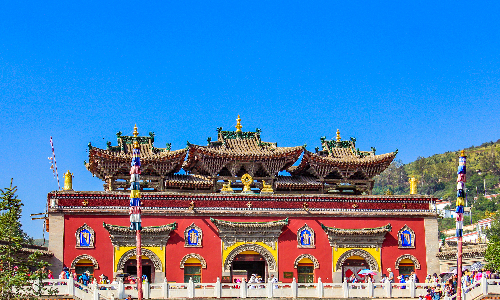
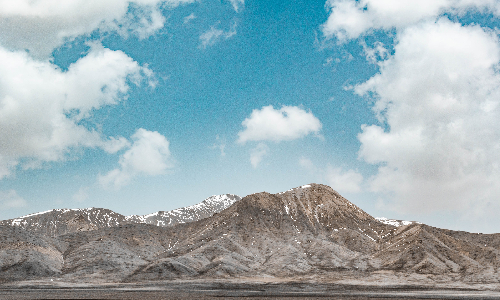
 Lhasa
Lhasa Today, your Qinghai tour is about to end and you will be transferred to the railway station and take an estimated train Z6801 13:50/11:20+1 to Lhasa. Your local guide in Qinghai will then transfer you to the hotel. You can choose to take some activities yourself in the morning and lunch is not included.
During your trip on the train, you can have a good sight of Nagqu Cuona Lake. The beautiful Cuona Lake is located in Nagqu city, and closes to the railway. The train will pass by Nagqu in tomorrow morning. You could have a panoramic view of the lake and you will have many photo options. You can also admire the scenery of the grassland dotted by the tents of nomad and Yak herds.
Today you will arrive in Lhasa, and the local guide will pick you up from the railway station. Then you will be transferred to the hotel and check in. You can arrange your time freely this after noon.
Lhasa, Tibet’s political, economic, cultural and educational center, is also a holy place for Tibetan Buddhism. The weather is sunny throughout the year, and the climate is pleasant. The sunshine time is more than quite 3,000 hours throughout the year, which is known as the “sunlight town”. I suggest that wear your sunglasses and sunscreen all the time, in case you get sunburnt.
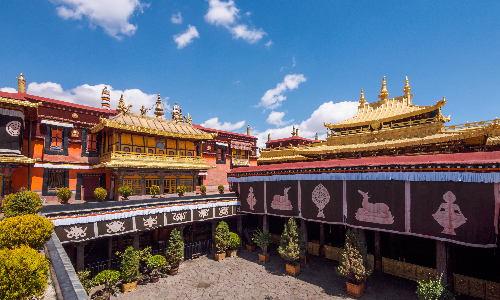
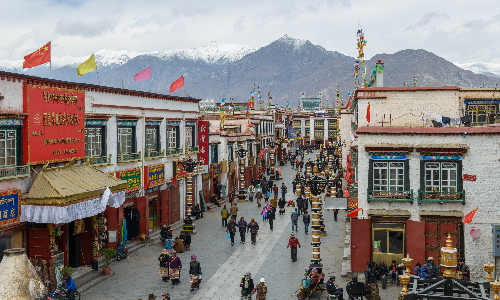
After breakfast, we will head to the world-class masterpiece - Potala Palace. Potala Palace is located on the Mabri Mountain the northwest of Lhasa, the capital of Tibet, China. It is a palace-style building complex. It was built in the 7th century during the reign of the Tibet King, Songtsan Gampo, and has a history of 1,300 years. It became the center of politics and religion and the winter palace residence of the Dalai Lamas after the renovation in the 17th century. In 1994, Potala Palace was listed as a World Cultural Heritage. The entire building complex covers an area of more than 100,000 square meters, with thousands of rooms. The whole palace is integrated with Mabri Mountain with a perfect layout, reflecting the superb skills of Tibetan craftsmen. The main building of the Potala Palace is thirteen-floor and is 115.7 meters high. It consists of the living palace, the Buddhist hall, the pagoda hall, and the monk’s dormitory. The main building of Potala Palace can be divided into two parts, the White Palace and the Red Palace. The White Palace is the living quarter of the Dalai Lama. There are various halls and corridors with exquisite furnishings and ornate decorations. The walls are painted with paintings associated with Buddhism. The Red Palace is in the center, enshrining thousands of Buddha statues, statues of Songtsan Gampo, statues of Princess Wencheng (Songtsan Gampo’s wife). Here you will also see pagodas decorated with gold and jewels, and these are where the bone ash or Buddha Sarira are enshrined.
After enjoying lunch at a local restaurant, our guide will lead you to Jokhang Temple. The Jokhang Temple is a Tibetan Buddhist temple built by the Tibetan King Songtsan Gampo. The temple was originally called “Rasa”, and later it became the name of the city and evolved into the current name “Lhasa”. With a history of more than 1,300 years, the Jokhang Temple has the supreme position in Tibetan Buddhism. The reason why Lhasa is known as a “sacred place” is related to this Buddhist temple. There enshrines a life-size statue of 12-year-old Sakyamuni, the founder of Buddhism. Jokhang Temple is the most brilliant surviving building in Tibet, and it is also the earliest wooden structure building among the Tibet ancient buildings. Combining the architectural styles of Tibet, Nepal, and India, the Jokhang Temple has become a classical example of Tibetan religious architecture. In front of the temple, the smoke of burning incense lingers all day long, and the devout worshippers have left deep marks of kowtowing to the Buddha on the bluestone floor in front of the temple door. Thousands of butter lamps are always lighted, proving thousands of pilgrims have visited here.
Today’s last destination for you is Barkhor Street. The old streets circled around the outer wall of the Jokhang Temple are called “Barkhor Street”. Barkhor Street, also known as Bajiao Street, is a well-known prayer road and commercial center in Lhasa, which completely preserves the traditional look and living style of this ancient city. Since the Jokhang Temple has become the core of Tibetan Buddhism after the 15th century, a large number of houses, shops, hotels, and handicraft workshops gradually appeared on the surrounding streets. Then many vendors, pilgrims, and nomads from Mongolia, China inland, Kashmir, Nepal, Bhutan, India, and other regions and countries gathered here, and the street now has developed into a religious street, sightseeing street, folk art street, cultural street, as well as a commercial street.
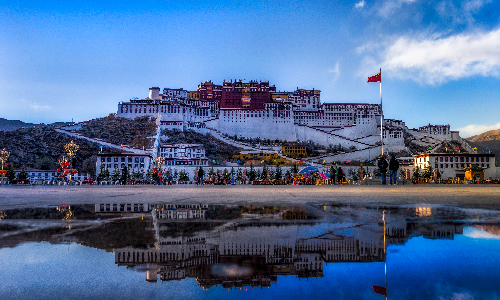
After enjoying your breakfast, we will take a walk in Norbulingka Park. Norbulingka, which means “a treasure garden” in Tibetan, is a national key cultural relic protection base. It was a typical Tibetan-style garden where Dalai Lamas lived to get away from the summer heat and dealt with the religious affairs. After more than 200 years of expansion, the area of the whole garden has reached 360,000 square meters. There are more than 100 species of plants within the garden. Not only are there common flowers and trees in Lhasa, but also exotic flowers and grasses from the southern and northern foothills of the Himalayas, making it a plateau botanical garden. With 374 rooms, the Norbulingka Park is one of the largest and the most historical sites with the best scenery among the artificial gardens in Tibet.
After lunch, we are heading to Drepung Monastery. Drepung Monastery is the largest temple in Lhasa and even in Tibet, which is a monastery of the Gelug Sect of Tibetan Buddhism. It is the highest-ranking monastery in the Gelug Sect. It is also known as one of the three major monasteries in Lhasa, along with Ganden Monastery and Sera Monastery. Drepung, which means “gathered rice” in Tibetan, symbolizes prosperity. The entire monastery is large in scale. The adjacent white buildings covering in the hillside, looks like an enormous pile of rice in the distance, and hence the name Drepung. Besides, its precious collections are also quite amazing. Many ancient porcelains, various thangkas, bronze statues, weapon armors, etc. are collected in the temple, which provides important materials for the study of Tibetan cultural and military history. A famous collection among them is Manjusri Bronze Realm, which has fine carvings and exquisite shapes. It is said that it is given as a gift by the Shunzhi Emperor (1635 - 1662) of the Qing Dynasty (1636 - 1912) during the reign of the 5th Dalai Lama.
The last attraction we will visit for this Lhasa trip is Sera Monastery. The willow-surrounded Sera Monastery has been a place where eminent monks gave lectures since ancient times. In its heyday, there were more than 8,000 monks in the monastery, which is only slightly fewer than Drepung Monastery in scale. In addition to admire the majestic of the monastery, you could also appreciate the precious relics here. There are tens of thousands of Vajra Buddha statues preserved in the Sera Monastery, most of which are made locally in Tibet. There are also many bronze Buddha statues brought from the China inland or India. The foremost illustrious sculpture is the statue of “Vidyaraja” in the main hall. The engraved copy “Kanjuer” in 1410 in the Ming Dynasty which is stored in the monastery was the first Tibetan engraved version of the Tripitaka, bestowed by Emperor Yongle, and has been well preserved. Besides, a large number of original colorful murals are preserved on the walls of the main hall.
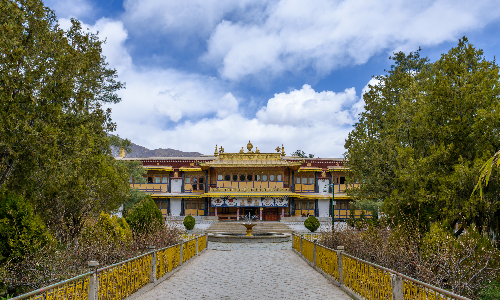
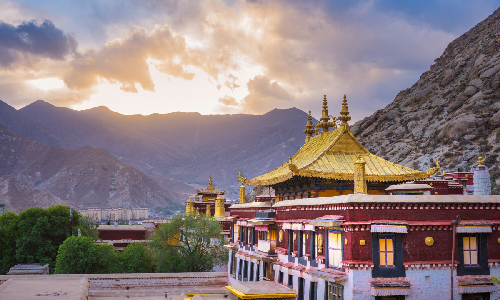
Today, we will take you to the airport according to your flight schedule and you will fly back to your sweet home. We are looking forward to serving you again in the other cities of China.
Author: Chunhui Lv
Proofreader: Summer Hou
| City | Five Star hotel list | Four Star hotel list |
|---|---|---|
| Xining | Norbulingka Park | Holiday Inn Xining Hot-Spring |
| Lhasa | Shangri-La Hotel Lhasa | Thangka hotel |
 |
![]() About your child or infant, please contact us for a discounted price.
About your child or infant, please contact us for a discounted price.



We started with a few days in Beijing & ended in Shanghai, from where we visited the Forbidden City and Great Wall. In between we visited Terra Cotta Warriors Museum, Panda Base, Shanghai Disneyland.

We had a wonderful holiday in China which will remain long in the memory. China is a breathtakingly beautiful country full of splendid temples and palaces, mountains and rivers, peaceful rural scenes and bustling shopping streets.
 QUICK ENQUIRY
QUICK ENQUIRY